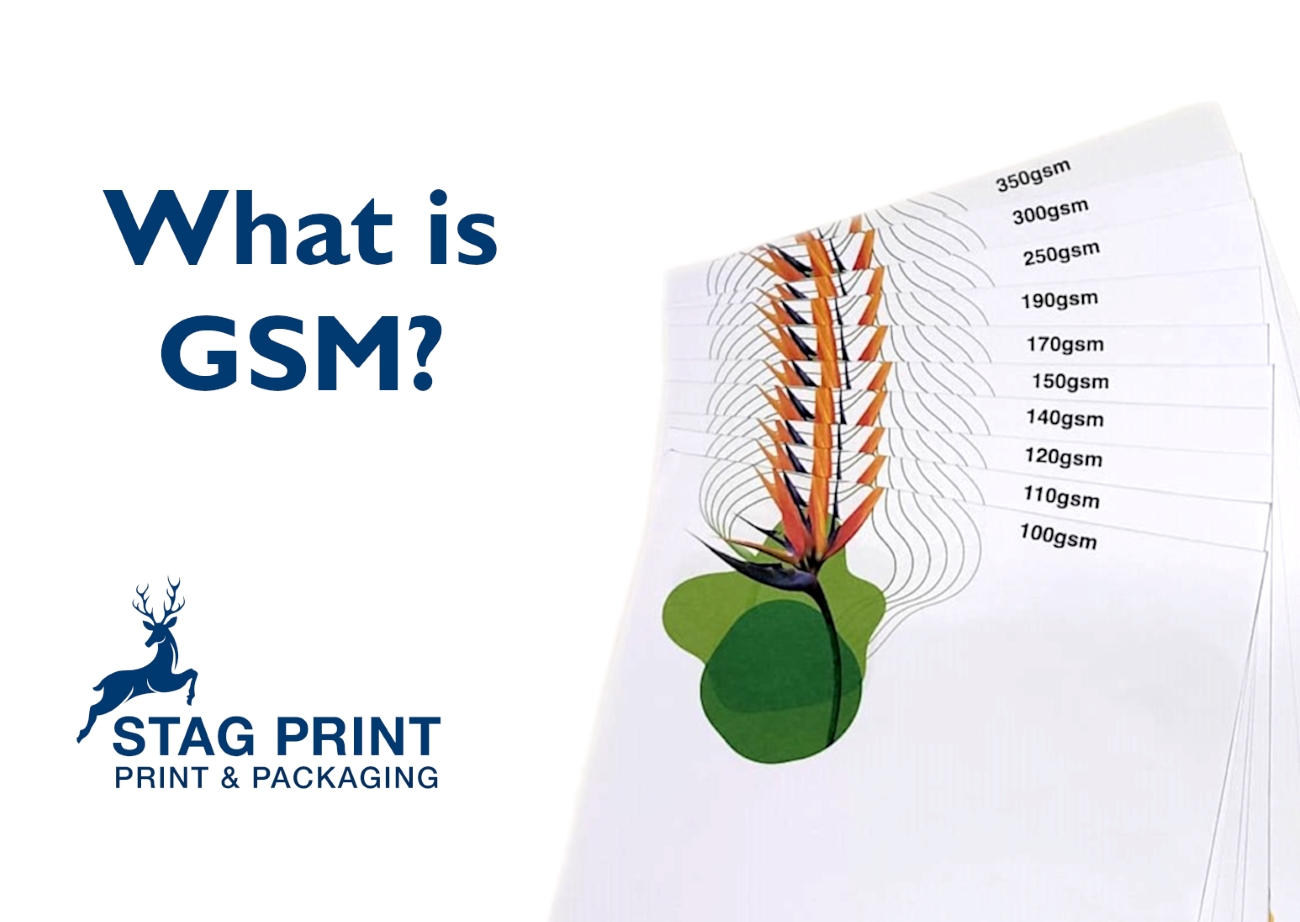GSM in printing and packaging: dispelling the myths
GSM (grams per square metre) is a well-known phrase in the printing and packaging world. Many people believe it’s to do with the thickness of the paper, and some people, even in our industry, confuse it with the density of paper. It’s neither.
Here we dispel the myths and clarify the facts.
GSM
GSM refers to the weight of the paper. If you take a sheet of paper that measured 1 metre by 1 metre, i.e. 1 square metre, and it weighed 100 grams, the weight of the paper would be 100gsm.
If you take a specific brand and type of paper and you increased the GSM, the paper will normally become thicker. This is why people associate higher gsm with thicker paper.
MIC
Micron (MIC), or 1000 of a millimetre, is the correct measure of thickness. The thicker the paper, the higher the mic.
The interesting point is, between different types and brands of paper, the correlation isn’t linear. For example, we print on 250gsm gloss coated paper which is 205mic and is great for magazine covers. We also print on 250gsm folding box board which is 400mic, nearly double the thickness, and is great for point-of-sale packaging cartons and sleeves.
So, how can two papers that weigh the same be so different in thickness? It’s to do with the composition of the paper i.e. what it’s made of and how densely packed the fibres are in the material.
Types of paper and differences
There are three main types of paper/board used in printing and packaging with key differences.
Coated papers (silk and gloss)
Coated with a mixture of materials including clay, white pigment, and a binding agent. The coating fills the spaces between the papers’ natural fibres to create a smooth surface, and the composition of the coating can be altered to change the properties of the paper. It is this coating that is heavy and results in the paper being quite thin for the same weight as other papers. Due to smoothness and lower ink absorption levels, this paper allows for excellent image reproduction and is used for marketing print such as brochures and magazines.
Typical thickness is 250gsm silk = 225mic and 250gsm gloss = 205mic.
Uncoated papers (paper pulp only)
We love this paper because, as the name suggests, it has no coating and is in a natural state. It has a slightly rougher and fibrous texture and is more absorbent than coated stocks. On conventional printing presses the extra absorption of ink meant the ink would absorb into the paper fibres and spread out resulting in less sharp image reproduction. Our Komori press with its state-of the art drying technology zaps the ink dry instantly stopping it from absorbing into the paper and so the images stay sharp. Many of our customers have switched to this. This means we can reduce the gsm while keeping the thickness the same.
Without a heavy clay coating this paper is thicker at the same weight so typical thickness is 250gsm = 285mic.
Folding box board (FBB)
FBB is specifically designed for producing packaging and is a lightweight board that is less resource-intensive than other paper boards. It is multi-layered, usually three layers.
- Top layer – smooth coated paper that forms the outside of the box.
- Middle layer – a pulp layer engineered to be very low-density but stiff.
- Bottom layer – usually an uncoated paper layer.
The properties of FBB make it great for scoring to make the fold lines on boxes and its thickness and stiffness helps protect the product inside. Typical thickness is 250gsm = 400mic.
As you can see, understanding the differences between types of paper and board and specific terms like MIC and GSM are essential to making informed printing and packaging choices. To learn more and find out how we can help please drop us an email.

